Noah Almy

James Pace
James H. Woolcott
John C. Young

Soldiers from Sauk County in the War of 1812
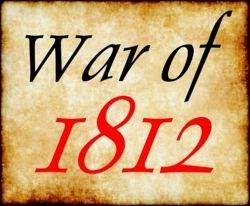
Information compiled from various sources

William C. Schuette
2023
For the Sauk County Historical Society
2
In the War of 1812, the United States took on the greatest naval power in the world, Great Britain, in a conflict that would have an immense impact on the young country’s future. Causes of the war included British attempts to restrict U.S. trade, the Royal Navy’s impressment of American seamen and America’s desire to expand its territory.

The United States suffered many costly defeats at the hands of British, Canadian and Native American troops over the course of the War of 1812, including the capture and burning of the nation’s capital, Washington, D.C., in August 1814. Nonetheless, American troops were able to repulse British invasions in New York, Baltimore and New Orleans, boosting national confidence and fostering a new spirit of patriotism. The ratification of the Treaty of Ghent on February 17, 1815, ended the war but left many of the most contentious questions unresolved. Nonetheless, many in the United States celebrated the War of 1812 as a “second war of independence,” beginning an era of partisan agreement and national pride.1



3
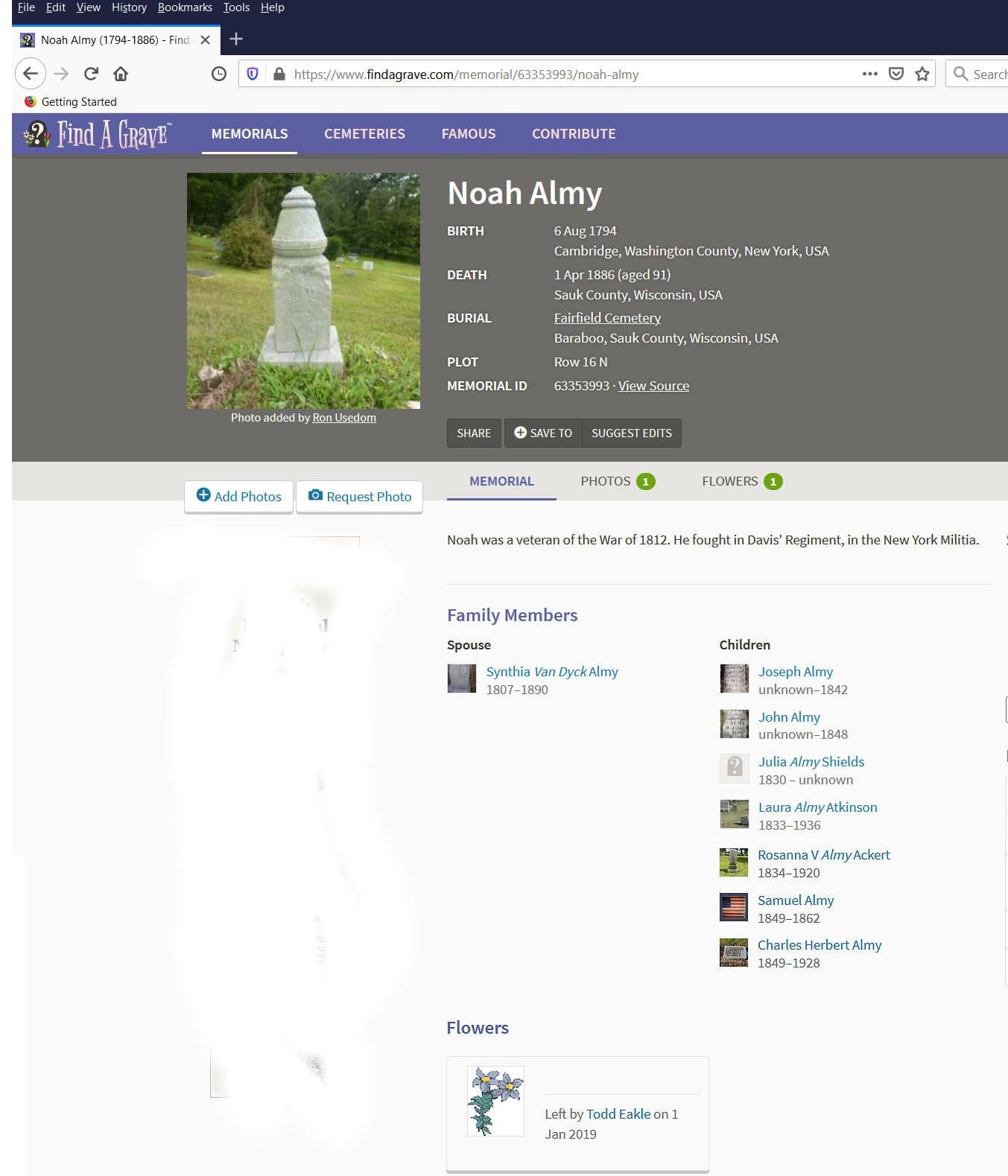

4 NoahAlmy 1794 1886


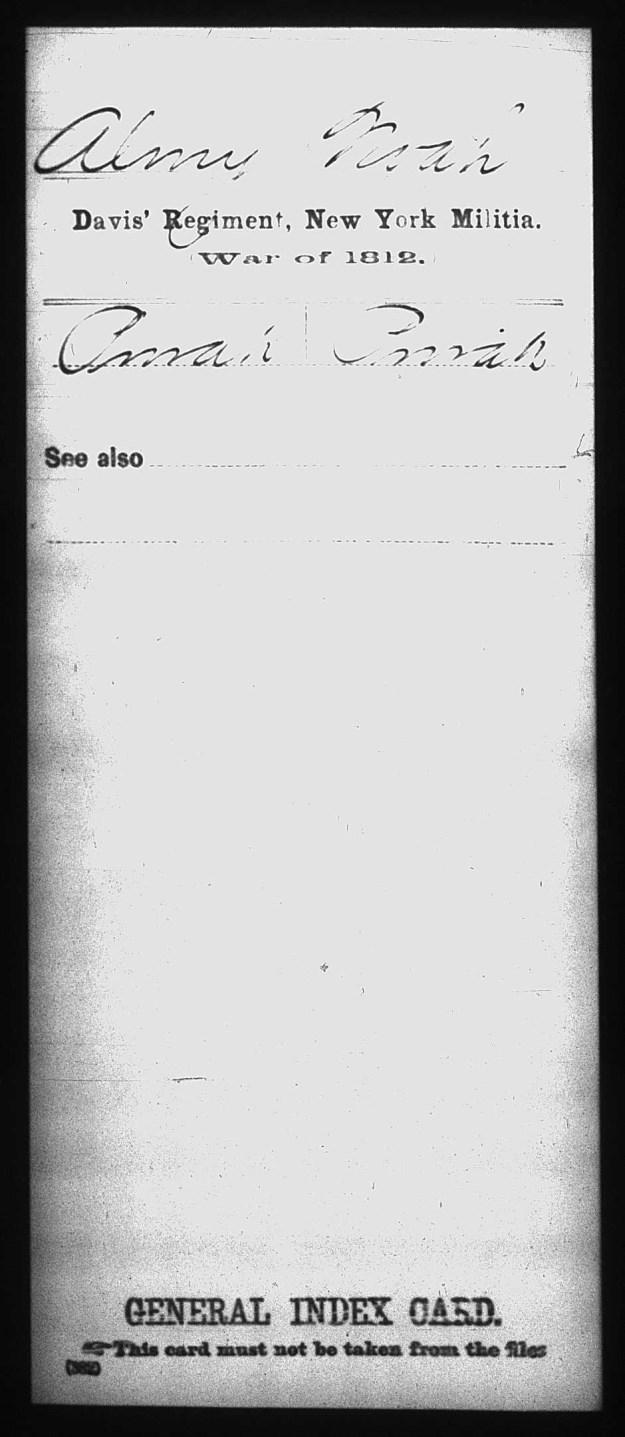
5
NoahAlmy 1794 1886
Military service record for NoahAlmy who fought in Davis’ Regiment, New York Militia.
Minutemen were a small hand-picked elite force which were required to be highly mobile and able to assemble quickly. Minutemen were selected from militia muster rolls by their commanding officers. Typically 25 years of age or younger, they were chosen for their enthusiasm, reliability, and physical strength.2




6
NoahAlmy 1794 1886
1794 1886
Genealogical record for NoahAlmy


7
NoahAlmy

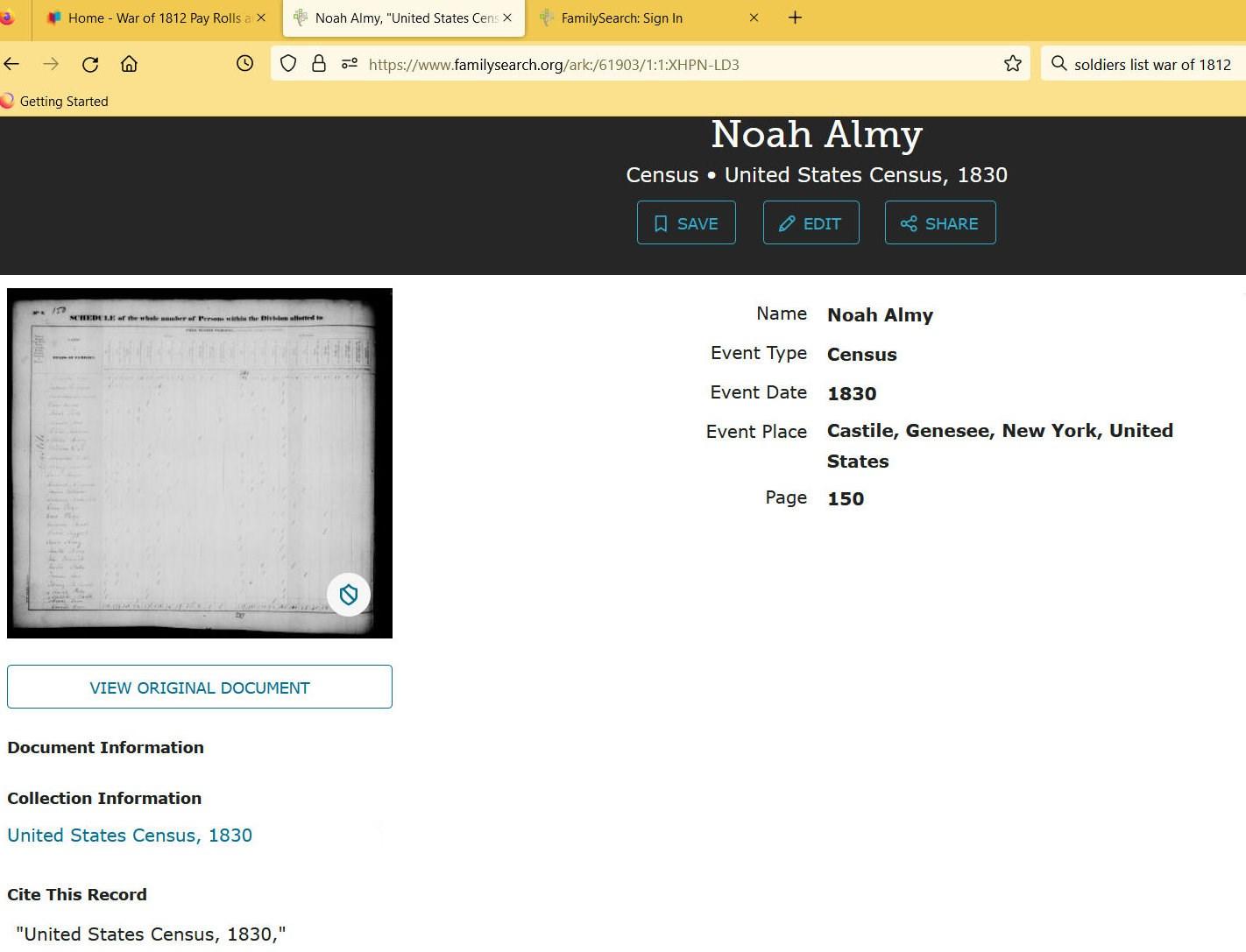

8
1886
NoahAlmy 1794
U.S. 1830 Census

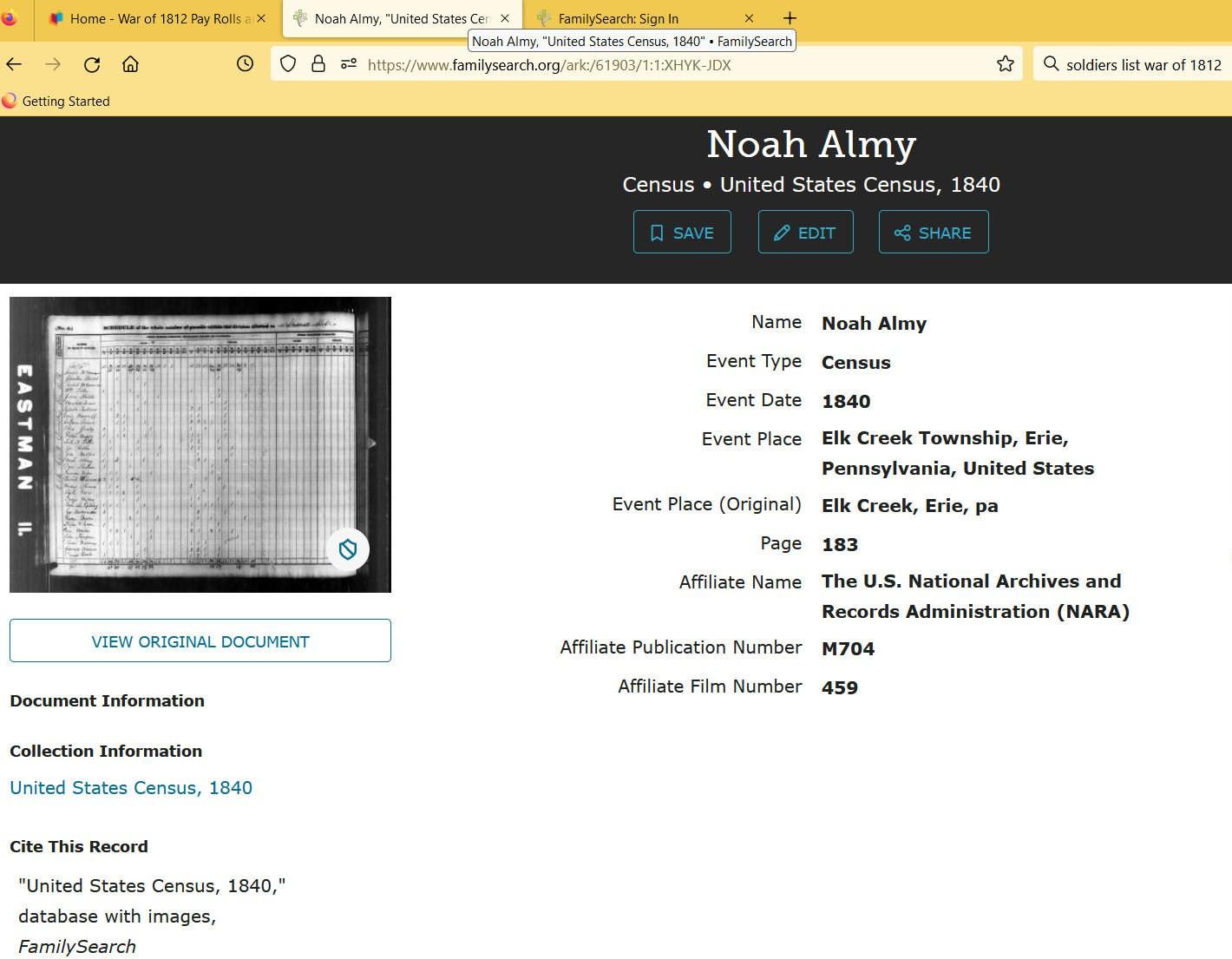

9
1794 1886
NoahAlmy
U.S. 1840 Census


10
1794 1886
1850 Census
NoahAlmy
U.S.

11 NoahAlmy 1794 1886 U.S. 1850 Census


12
1886
NoahAlmy 1794
1860 U.S. Census Record for NoahAlmy
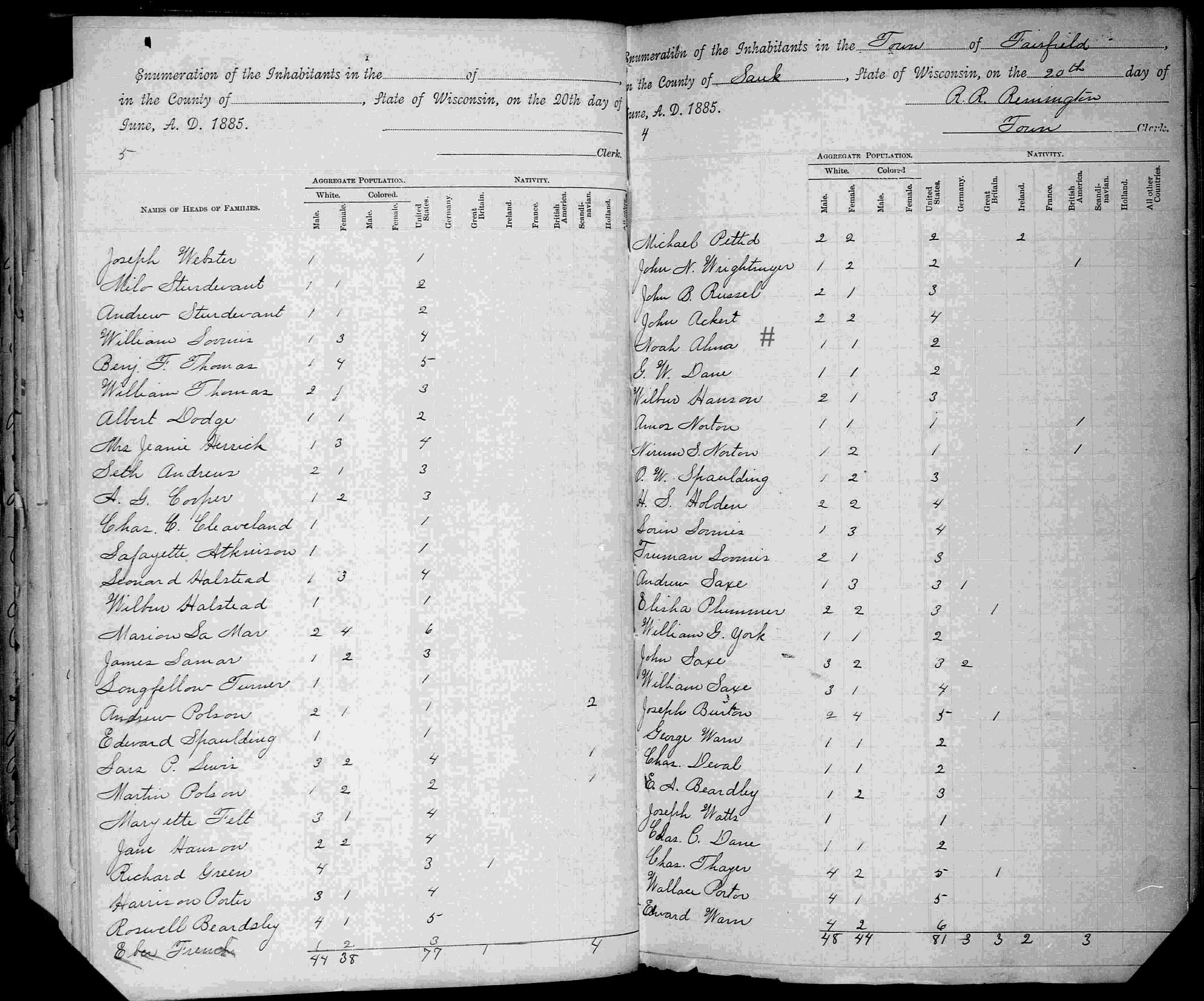
13 NoahAlmy 1794 1886
1860 U.S. Census Record for NoahAlmy


14
NoahAlmy 1794 1886
U.S. 1870 Census Record for NoahAlmy
1794 1886

15
NoahAlmy
U.S. 1870 Census Record for NoahAlmy

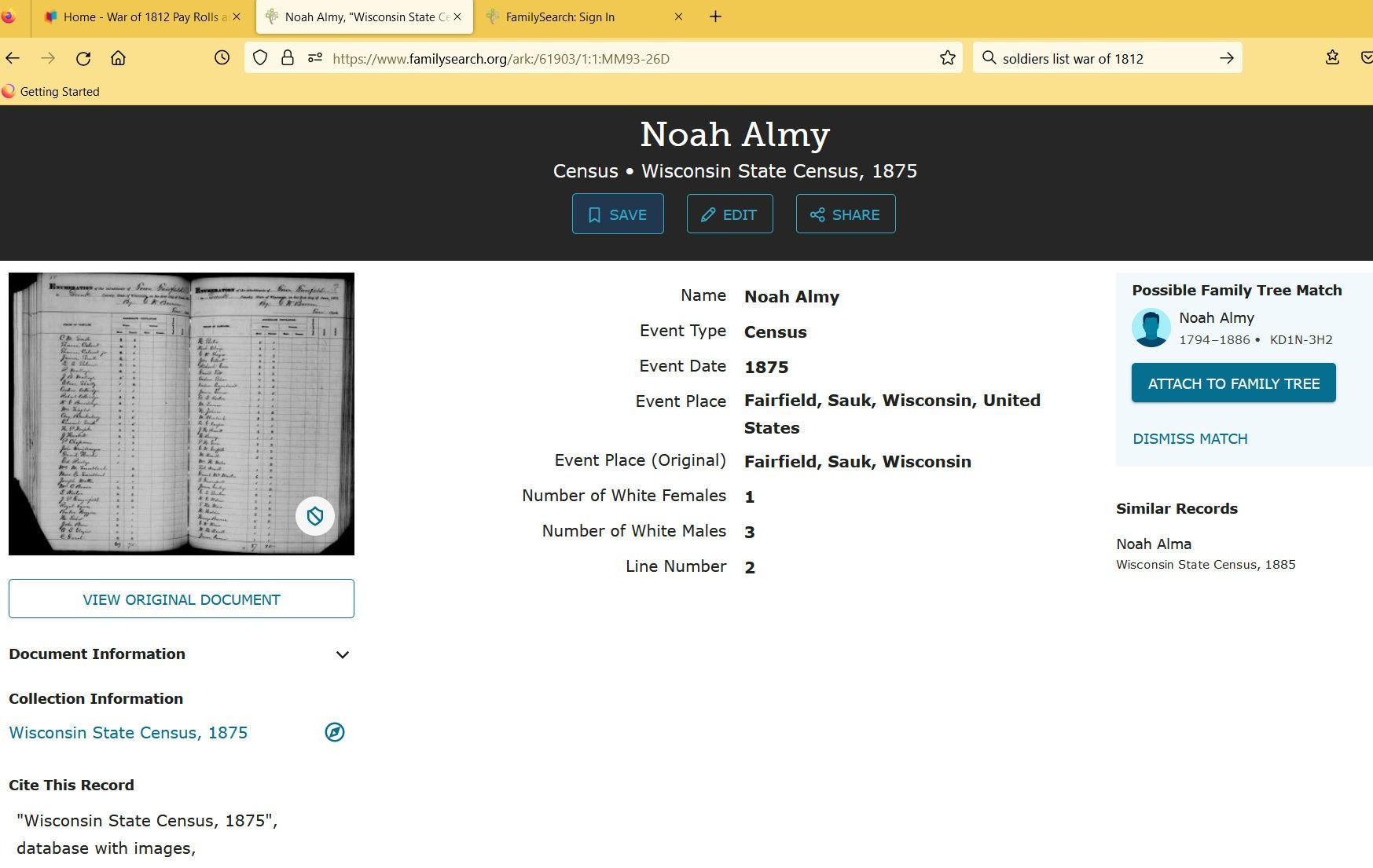

16 NoahAlmy 1794 1886 Wisconsin 1875 Census


17
1794 1886
NoahAlmy
U.S. 1880 Census Record for NoahAlmy

18
Almy 1794 1886
Noah
U.S. 1880 Census Record for NoahAlmy


19 NoahAlmy 1794 1886 Noah Almy Obituary

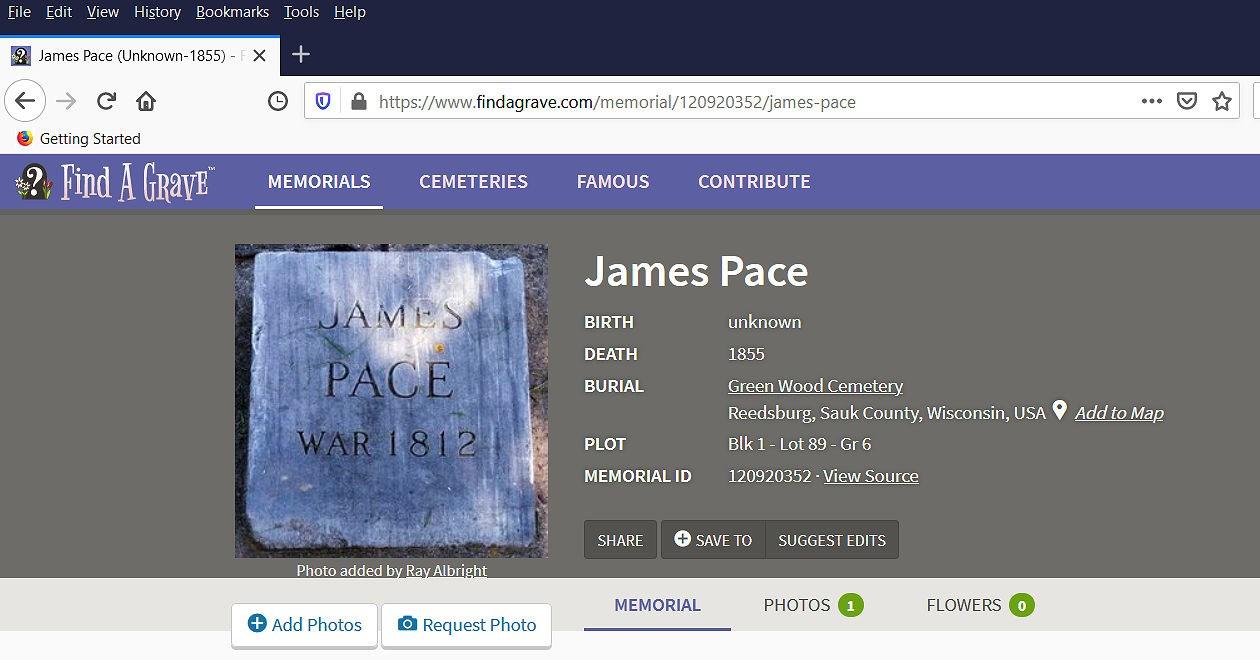




20
James Pace D. 1855
James Pace D. 1855

It is unknown with any certainty, if this is the James Pace who is listed as being buried in Reedsburg’s Greenwood Cemetery. Both these names are connected with the War of 1812. It’s possible that the writer of the above 1904 article got the first name wrong. Or, when the tombstone marker was created, they got the wrong first name. The burial date for William Pace is noted as being about 1860. James Pace is listed as being buried in 1855. It’s possible that these two dates were just estimates, or someone’s best guess.
As noted on the Greenwood cemetery plot map for James Pace, is the name “Strong”, who probably purchased the lot. The “V” stands for Veteran. Also, that name is mentioned in the above article as being the person who donated the lots in the cemetery for “such purposes”.

21
Extract from a list of soldiers who served in the War of 1812 for James Pace
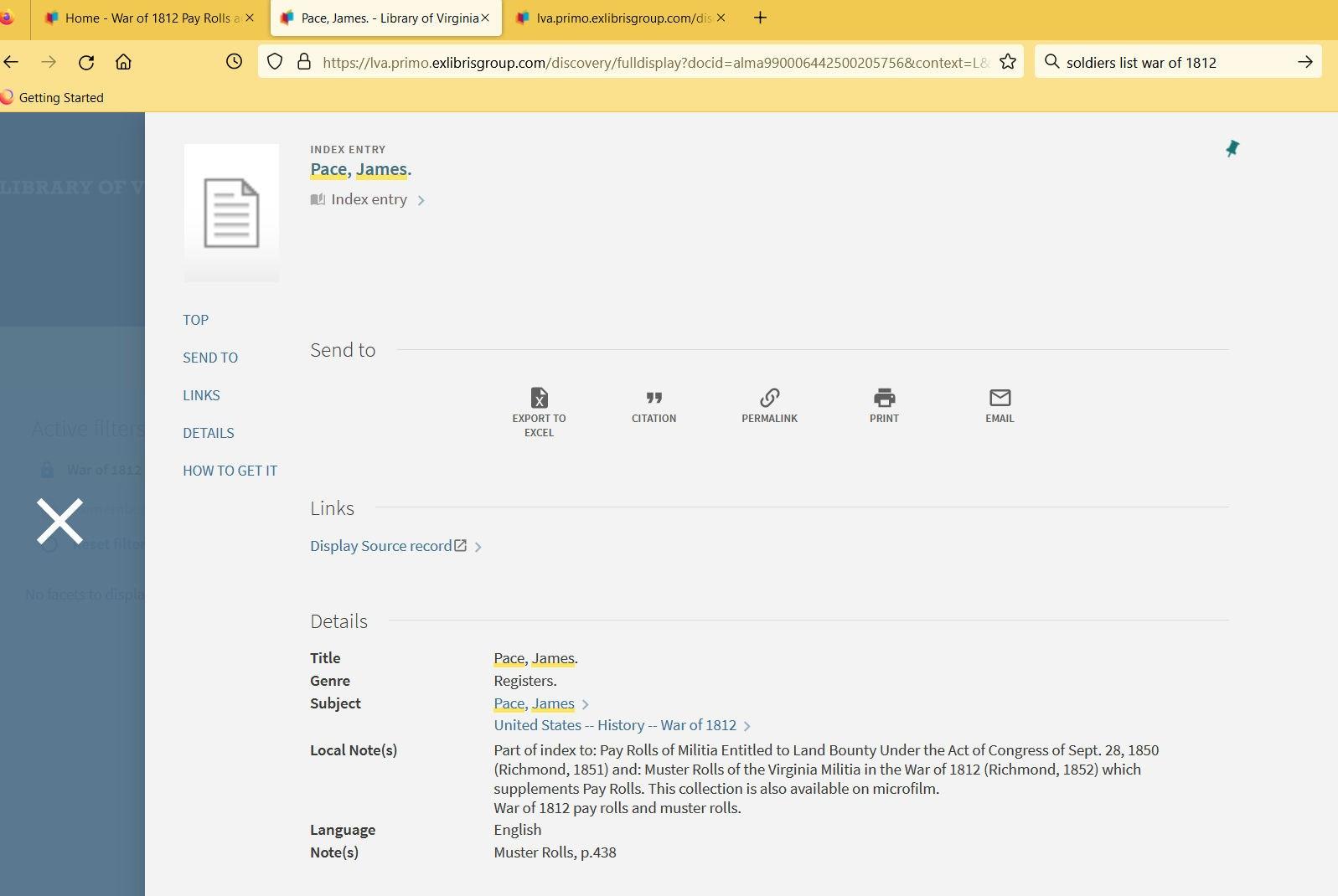

22
James Pace D. 1855

23
1855
James Pace D.
Pension Record for James Pace

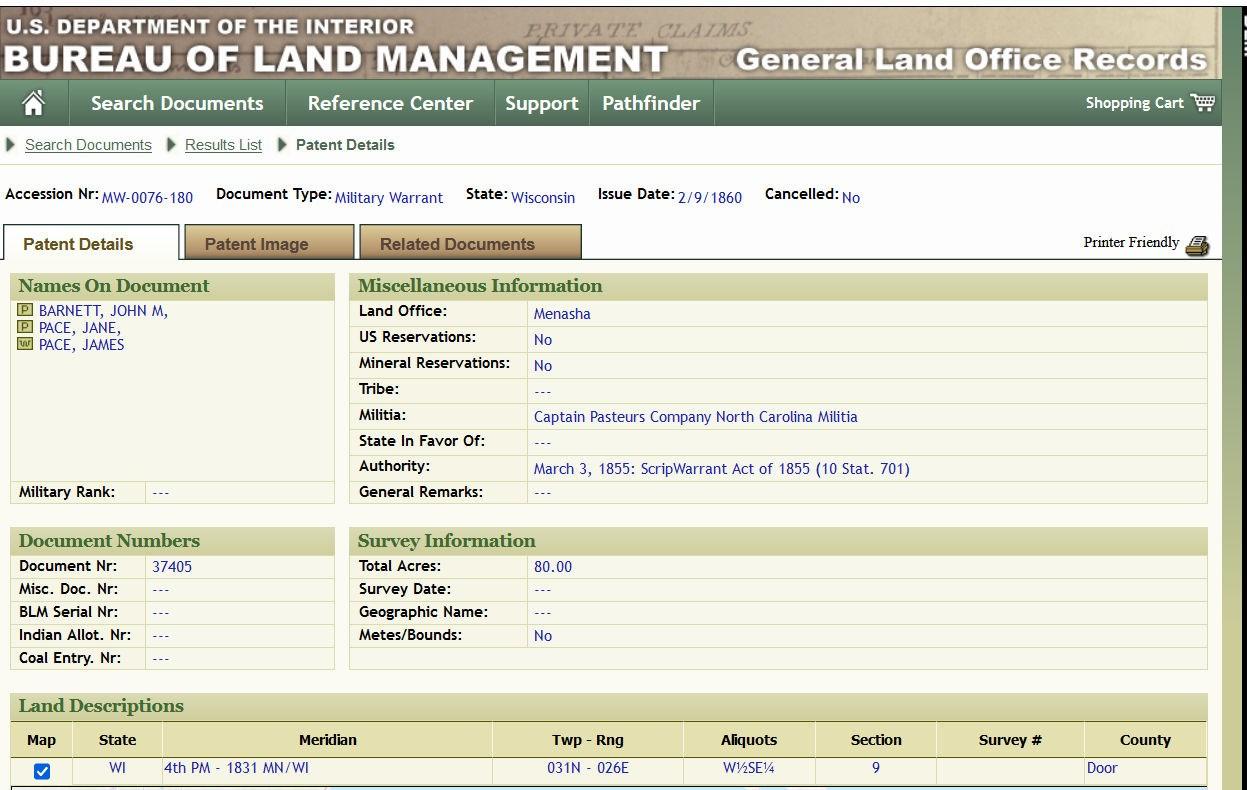
24
1855
James Pace D.
Bounty Land granted to the widow of James Pace

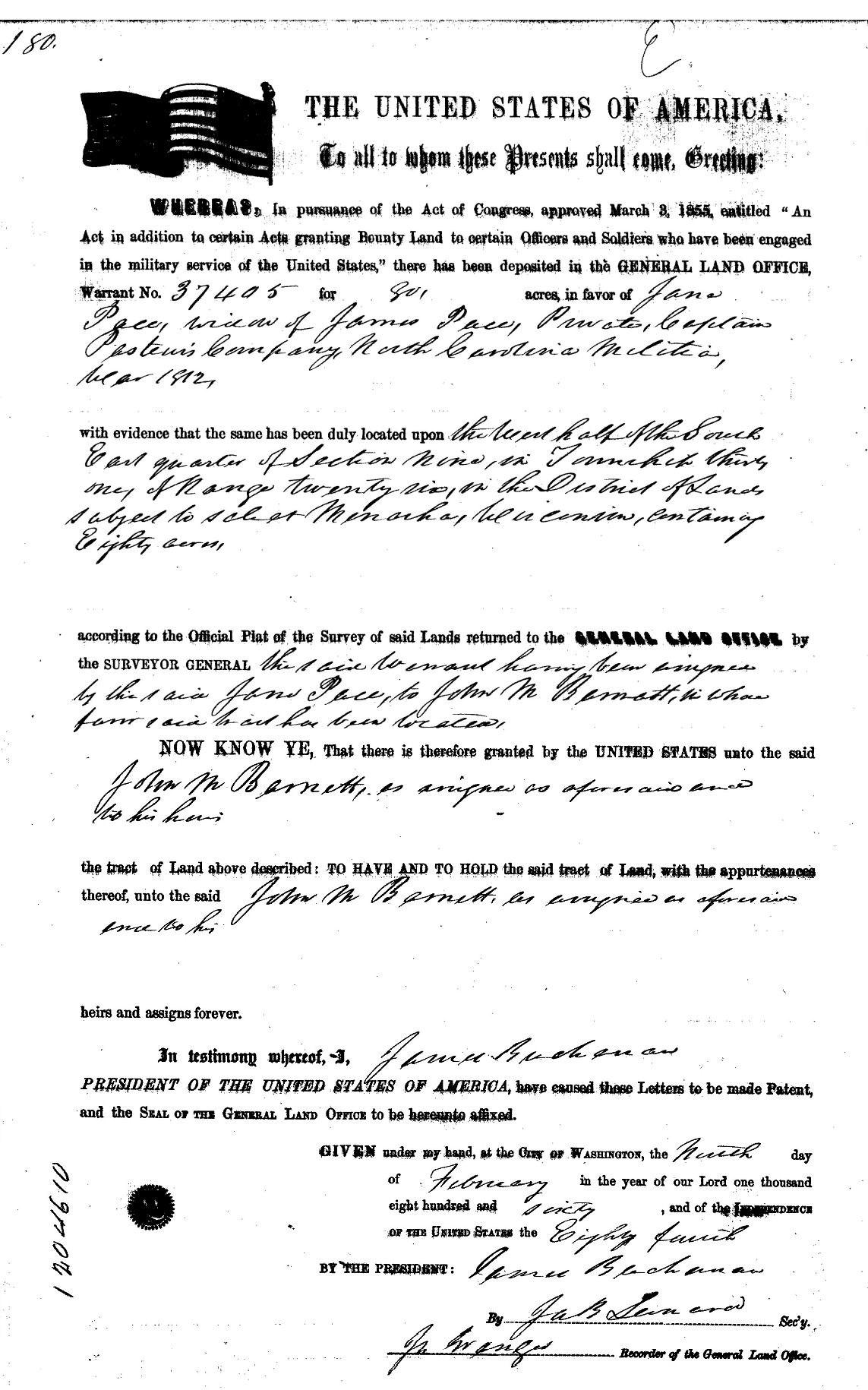
25
James Pace D.
1855
Bounty Land granted to the widow of James Pace
Although Vermont was not the scene of any major battles during the War of 1812, its position as a border state with British North America, and the demands by the federal government for the recruitment of troops dictated the state's involvement in the war. Several regiments of U. S. Army troops were raised, as were militia companies for the defense of the state's northern border areas. Vermont troops served primarily in the military campaigns in northern New York.3
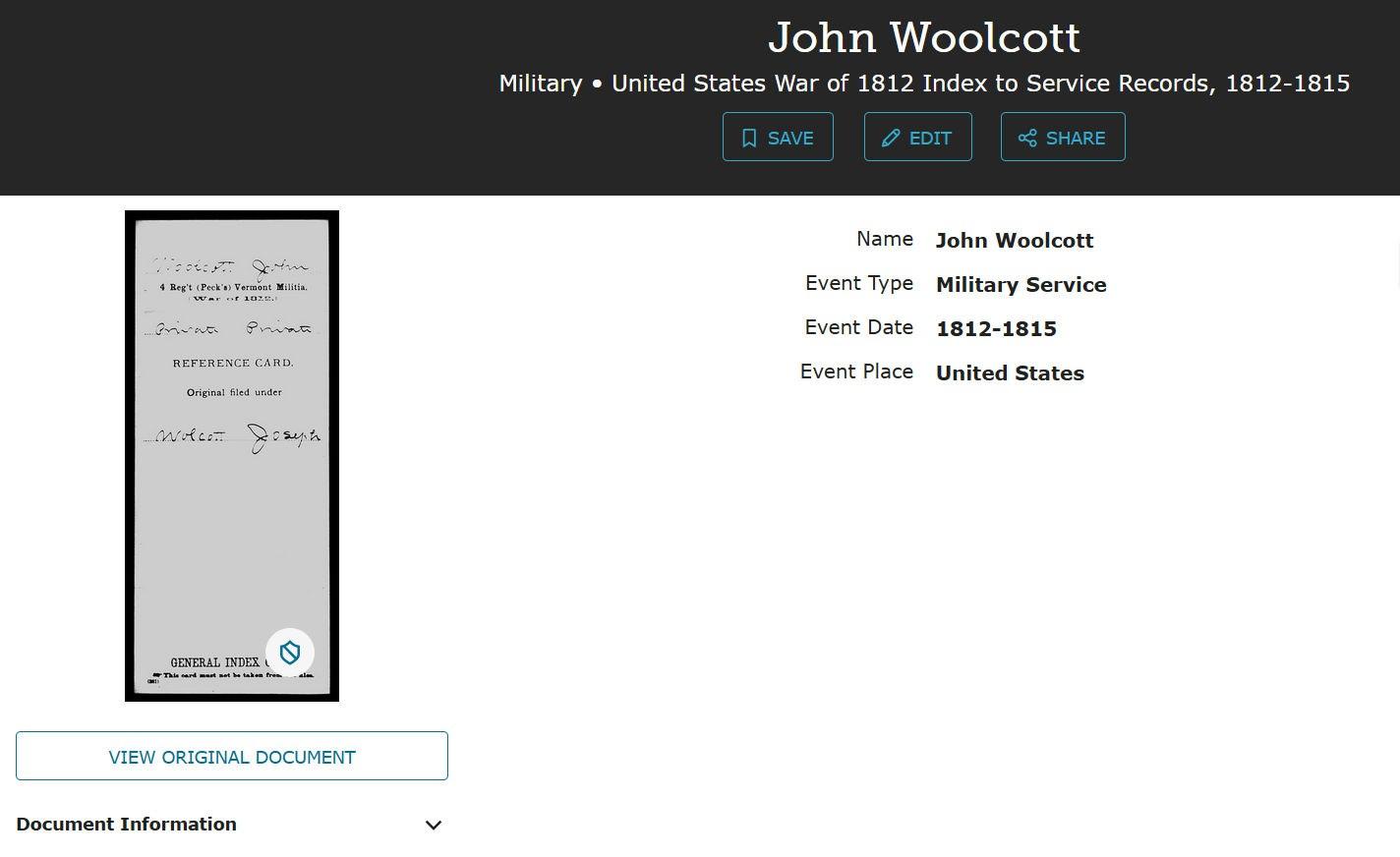

26
John Woolcott 1787 1870
The Reference Card indicates that John Woolcott served in the 4th (Pecks or Capt. Lewis Peckham's Co.) Vermont Militia during the War of 1812. His obituary notes that he was living in Vermont at the time of his enlistment in 1808.

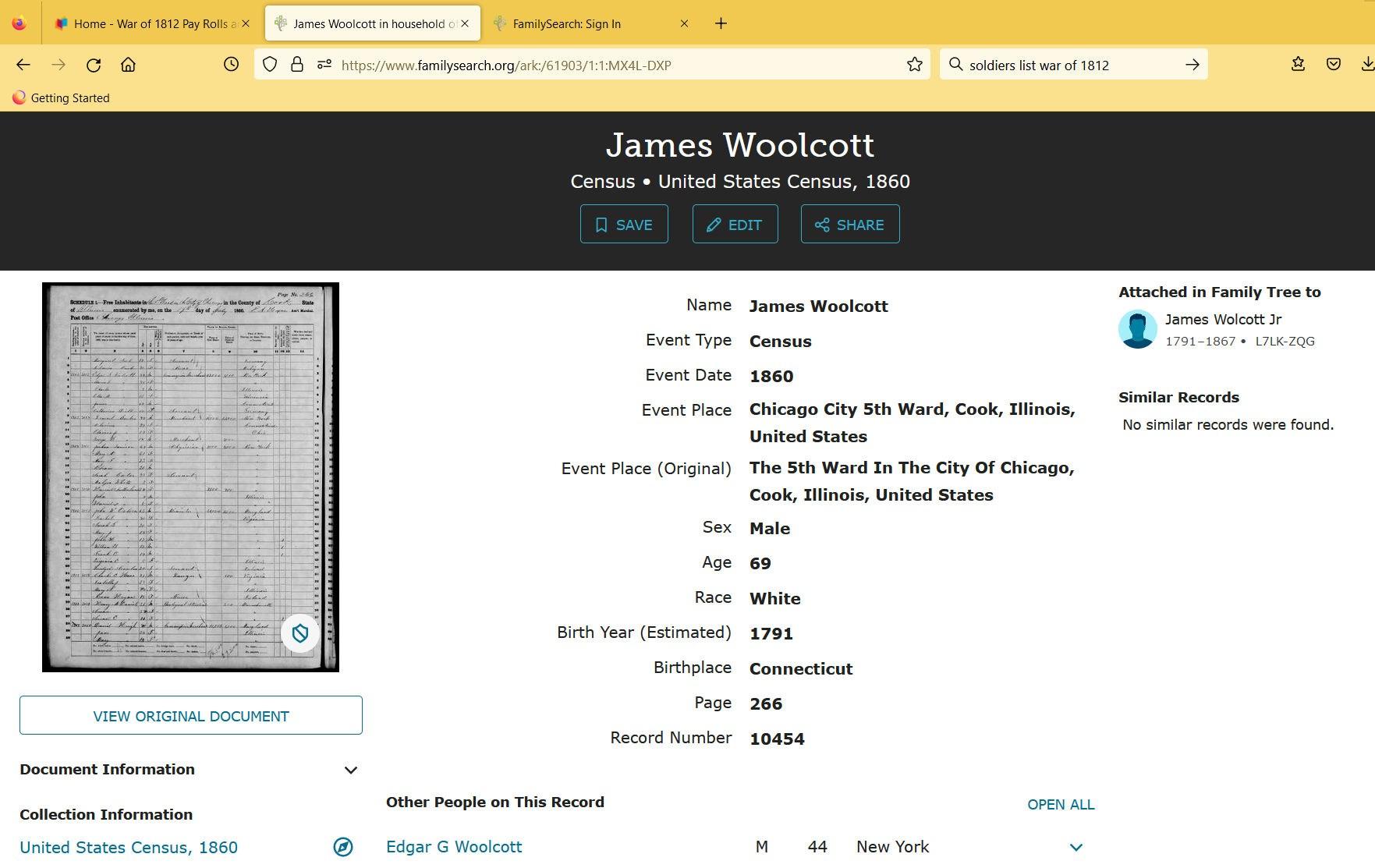
27
James Woolcott 1787 1870
U.S. 1860 Census Record for James Woolcott

28
James Woolcott 1787
1870
U.S. 1860 Census Record for James Woolcott


29
James Woolcott 1787 1870
U.S. 1870 Census Record for James Woolcott


30
James Woolcott 1787 1870
U.S. 1870 Census Record for James Woolcott




31
1790 1878 U.S.
John Christian Young
1860 Census Record for John C.
1787 1870


32
James Woolcott
Marriage Record of James H. Woolcott & Catharine Reinwalt in 1857
James Woolcott
1787 1870

It is possible that Mr. Woolcott went by the name of John. Or, it’s possible that the newspaper editor made a mistake on his first name. All the other information listed does fit James Woolcott.
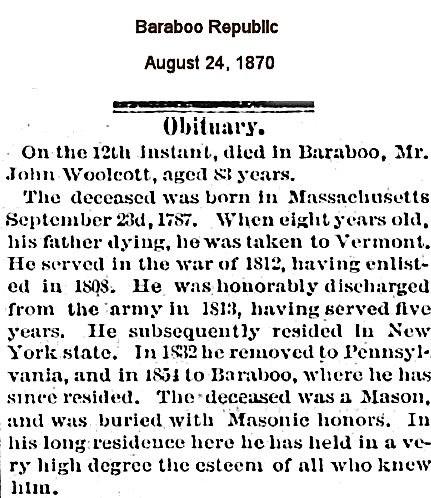
33


34
1790 1878
John Christian Young
Discharge Certificate from the army of the War of 1812 for John Young
John Christian Young
Background



Sacket's Harbor is located on the southeast shore of Lake Ontario in Northern New York State. It was developed as the chief shipbuilding yard for the United States during the War of 1812, and twelve warships were completed there. With a good strategic position on the lake, abundant resources, and an excellent natural harbor, the small village of several hundred people was engulfed as it developed as the center of military and naval operations for the war's northern theater. Following the first battle, the village and harbor were developed and fortified as a large and centralized military complex, served by several thousand troops and 3,000 workers at the shipyard. The complex became the fourth largest center of population in the state in this period.
On July 19, the British sent demands for the surrender of American ships in Sackets Harbor, including USS Scourge.
July 19, 1812, Captain Melancthon Taylor Woolsey, of USS Oneida, discovered from the masthead of his brig five enemy vessels sailing up to Sacket's Harbor. The British vessels, which belonged to the Provincial Marine, were Royal George; (24 guns), Prince Regent (22 guns), Earl of Moira (20 guns), Governor Simcoe (10 guns), and Seneca (2 guns). The British captured a merchant ship carrying flour nearby and sent its crew shore with the demands that the US surrender USS Oneida and Lord Nelson, a merchant ship that US forces had captured before war was declared. They said that if a shot was fired at them, the British would burn the village of Sacket's Harbor.


Battle
The Attack on Sacketts Harbour, 19th July 1812, by Irwin John Bevan
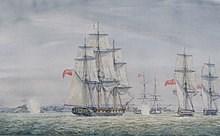
The first shots were fired by the British at the brig Oneida, which attempted to escape the incoming British vessels but failed and returned to Navy Point. The British continued on and dropped anchor. Back at the point, Oneida was moored with one broadside of nine guns to the enemy, while the others were taken out and hastily placed on a breastwork along the shoreline, near where a 32-pounder cannon, intended for Oneida, but found too heavy, had been mounted on a pivot. Below the cannon a protective mound had been constructed about 6 feet (1.8 m) high.
Alarm guns were fired and expresses were sent to call in the neighboringmilitias
Most of the militia did not arrive in time to render assistance; however, by the end of the day, some 3,000 local militia had assembled but they did not engage. The British had been misinformed about the defenses of the harbor and assumed there was nothing to be feared in the way of ordnance. The force at that time in town was, besides the crew of Oneida, a regiment under Colonel Bellinger, a volunteer company of artillery under Captain Camp, and the militia.
35
1790 1878
Captain Melancthon Woolsey commanded American troops during the battle .
John Christian Young served at Sacket’s Harbor during the war.
John Christian Young
1790 1878
Captain Woolsey, leaving his brig in charge of a lieutenant, took command on shore, the 32-pounder being in charge of William Vaughan, a sailing master, and the other guns under that of Captain Camp. There was no shot in town larger than 24-pound (11 kg) balls, which were used with the aid of patches made of carpet, in the 32-pounder. By the time these arrangements were made, the enemy had arrived within range, nearly in front of the battery.
The action was commenced; the first shot was fired from the 32-pounder, which failed to hit any of the British ships. A shout of laughter was heard from the fleet just after, indicating that the American's first shot fell too short of target. The British returned a salvo briskly at the American battery and continued for two hours. Most of the British shots were reportedly accurate. The Americans returned fire throughout the bombardment; Oneida's broadsides and their 32-pounder inflicted many hits or near hits on the Royal Navy vessels.
Towards the close of the action, as the flagship Royal George was maneuvering to fire another broadside, a 24-pound shot struck her stern and raked her whole length, killing eight men, and doing much damage. Royal George also had severe damage to her top mast and rigging. Other British warships were damaged but the extent is unknown. Upon this, the signal of retreat was given and the British fleet bore away for Kingston, Upper Canada, without ceremony. The American band struck up the national tune of "Yankee Doodle," and the troops yelled three cheers of victory.
Aftermath
On July 24, 1812, General Jacob Brown attributed the success of the day to the officers Woolsey, Bellinger, and Camp, in their respective capacities, and especially to the crew of the 32-pounder. William Vaughan, who had commanded the 32-pounder, claimed the honor of having fired the first hostile gun in the war.Julius Torry, one of the men at this gun, was an African American better known as Black Julius, and a great favorite in the camp. He served at his post with remarkable activity and courage. As there was no opportunity for the use of small arms, the greater part of the troops who were drawn up, were spectators of the engagement.4
36
New York militiamen and volunteers who served during the War of 1812 became eligible to receive reimbursement for supplies, clothing, and equipment furnished for the war effort by the Laws of 1818. It was not until 1857, however, that the State of New York created an administrative "board of commissioners," consisting of the Adjutant General and Inspector General, to examine and approve claims submitted by War of 1812 veterans, their widows, or other legal claimants. Legislation passed two years later amended the previous law, and authorized the board of commissioners to issue certificates to claimants stating "the amount which [the commissioners] shall have found to be due." Under the 1859 law, 17,228 claims were audited and approved, and an additional 44 claims were approved in 1872.5


37
Young 1790 1878 Corrections to this information: Residence Place: Reedsburg Sauk County Pension Place: Sauk, Wisconsin, USA
John Christian
John Christian Young
Corrections to the above information:
Residence Place: Reedsburg Sauk County
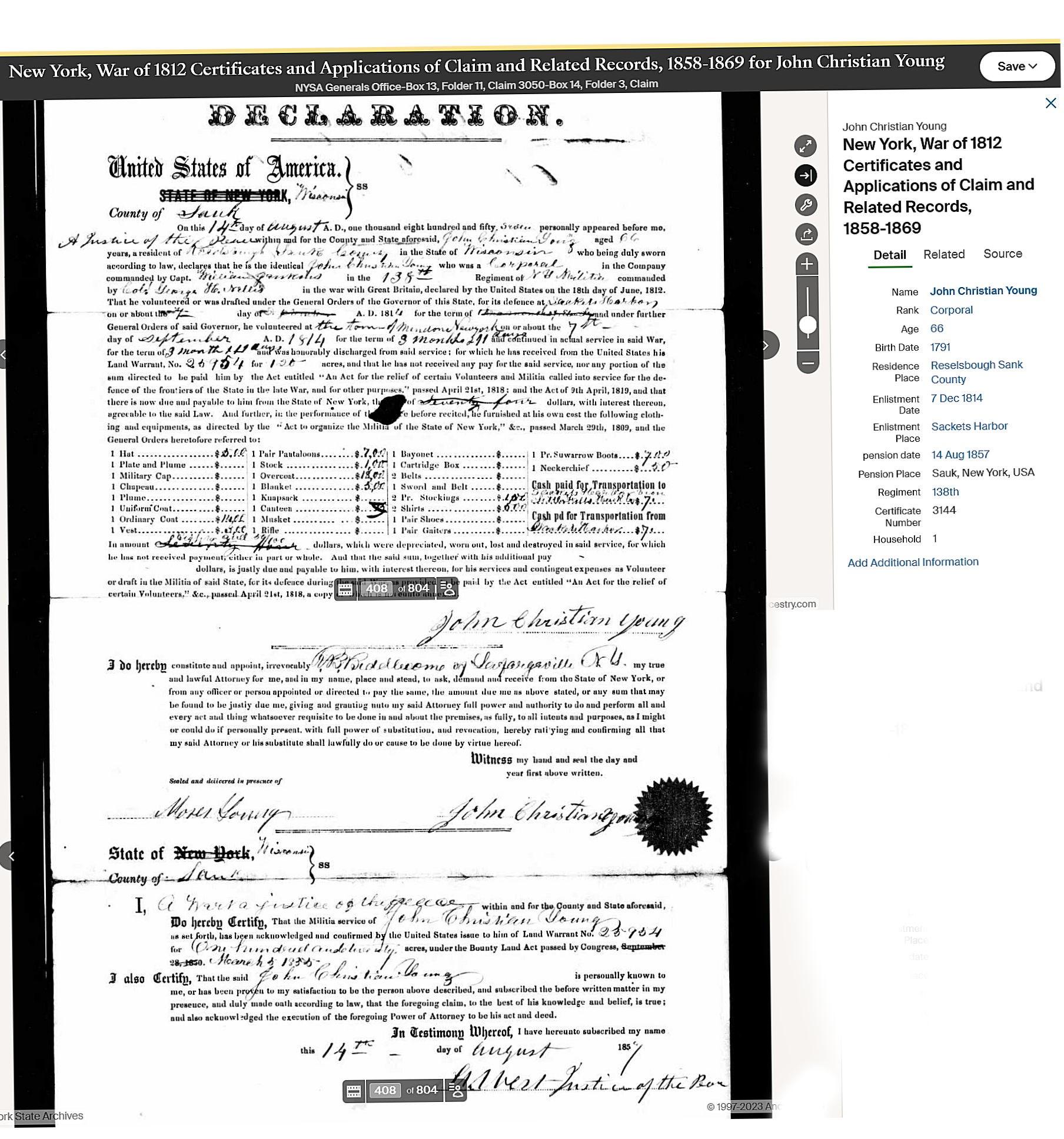
Pension Place: Sauk, Wisconsin, USA

38
1790 1878
Bounty Land


39
1790 1878
John Christian Young

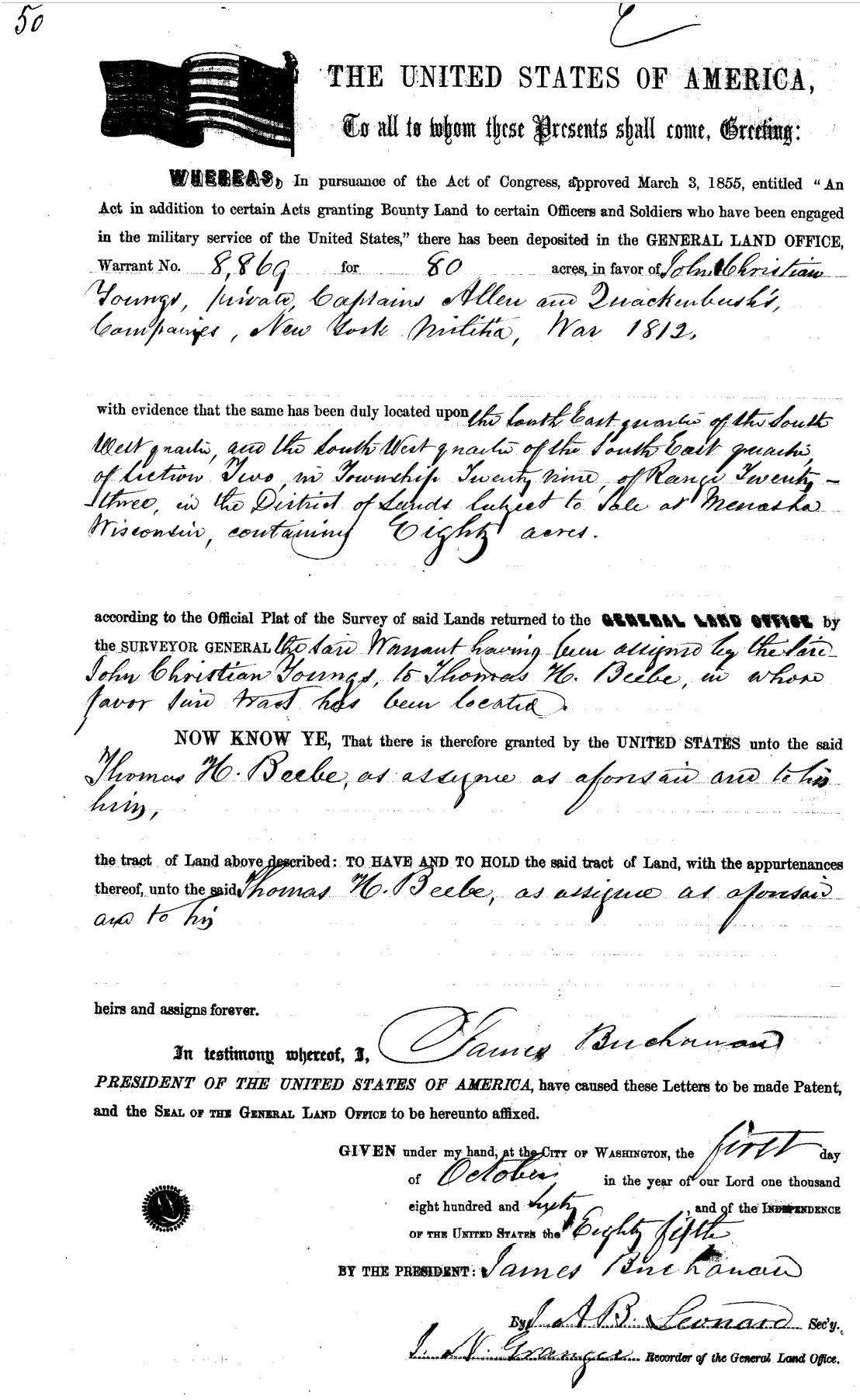
40
1878
John Christian Young 1790
Bounty Land
[See following page]




41
1790 1878
John Christian Young
Application for Membership in the Sons of the American Revolution
John Christian Young
The National Society of the Sons of the American Revolution (SAR or NSSAR) is an American congressionally chartered organization, founded in 1889 and headquartered in Louisville, Kentucky. A non-profit corporation, it has described its purpose as maintaining and extending “the institutions of American freedom, an appreciation for true patriotism, a respect for our national symbols, the value of American citizenship, [and] the unifying force of ‘e pluribus unum’ that has created, from the people of many nations, one nation and one people.”
The members of the society are male descendants of people who served in the American Revolutionary War or who contributed to establishing the independence of the United States. It is dedicated to perpetuating American ideals and traditions, and to protecting the Constitution of the United States; the official recognition of Constitution Day, Flag Day, and Bill of Rights Day were established through its efforts. It has members in the United States, Canada, France, Germany, Mexico, Spain, Switzerland, and the United Kingdom 6
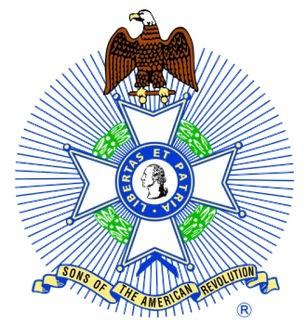
42
1790 1878


43 John Christian Young 1790 1878




44
1790 1878
John Christian Young
John Christian Young is buried in Green Wood Cemetery, Reedsburg, WI
PensionApplication for John C. Young
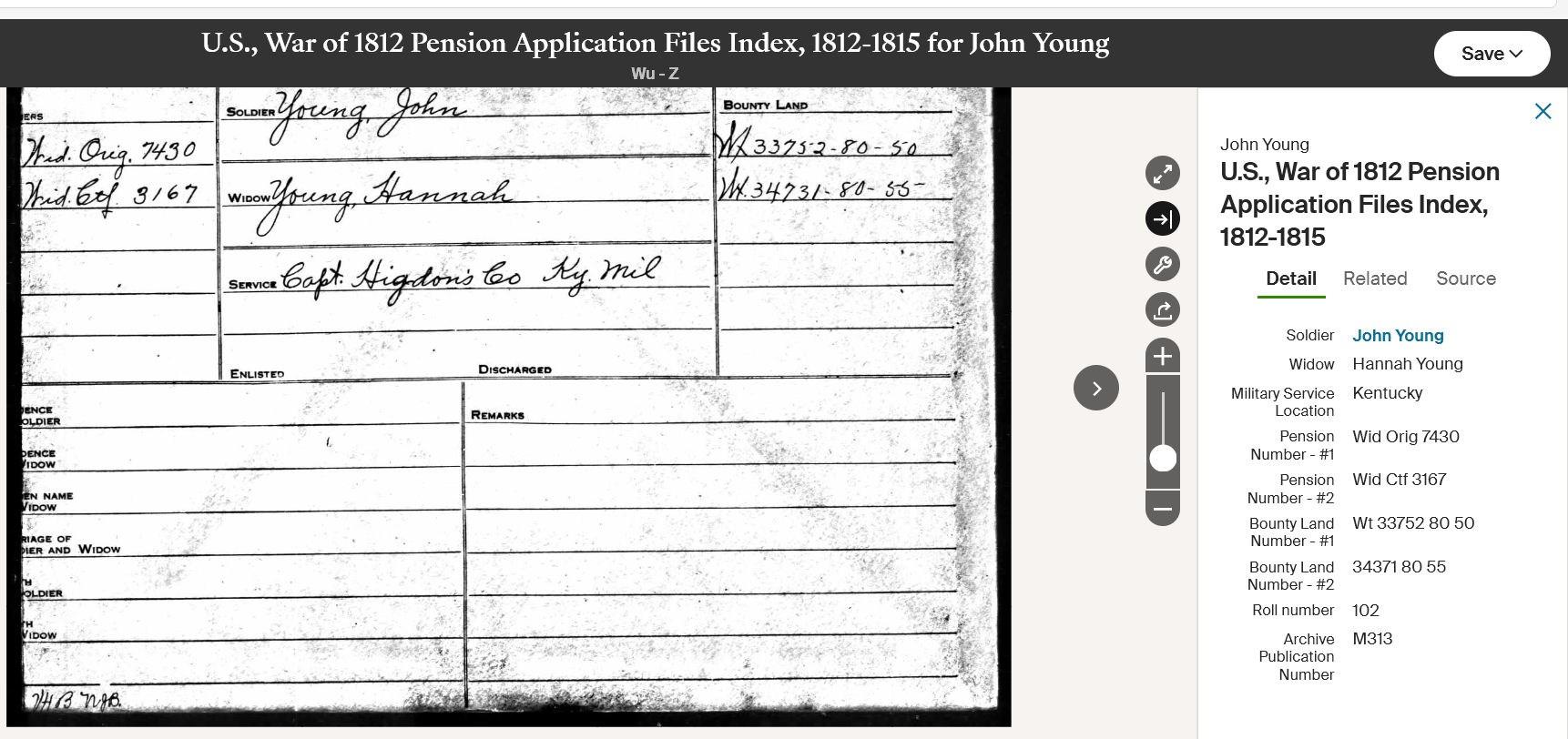
 By his widow, Hannah Young
By his widow, Hannah Young
The act of 1878 provided pensions for surviving soldiers and sailors of the War of 1812 who had served for 14 days or in any engagement and had been honorably discharged and for their surviving widows. It made no proviso regarding the date of marriage.7
45
John Christian Young 1790 1878
Sources
1 History.com, https://www.history.com/topics/19th-century/war-of-1812

2 Wikipedia, https://www.ushistory.org/people/minutemen.htm, Minute Man
3 Wikipedia, https://en.wikipedia.org/wiki/Military_history_of_Vermont

4 Wikipedia, https://en.wikipedia.org/wiki/First_Battle_of_Sacket%27s_Harbor, Battle of Sacket’s Harbor
5 N.Y. State Archives, https://iarchives.nysed.gov/xtf/view?docId=ead/findingaids/A0020.xml
6 Wikipedia, https://en.wikipedia.org/wiki/Sons_of_the_American_Revolution
7 War Of 1812 Pension Application Files, https://www.archives.gov › research › military › army
46







































































































 By his widow, Hannah Young
By his widow, Hannah Young

